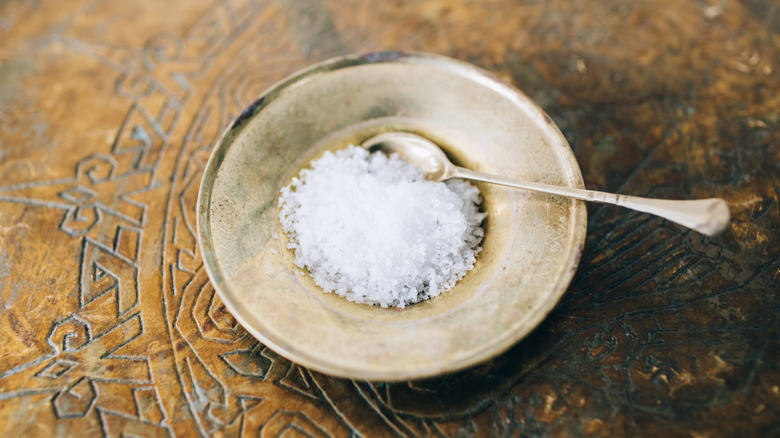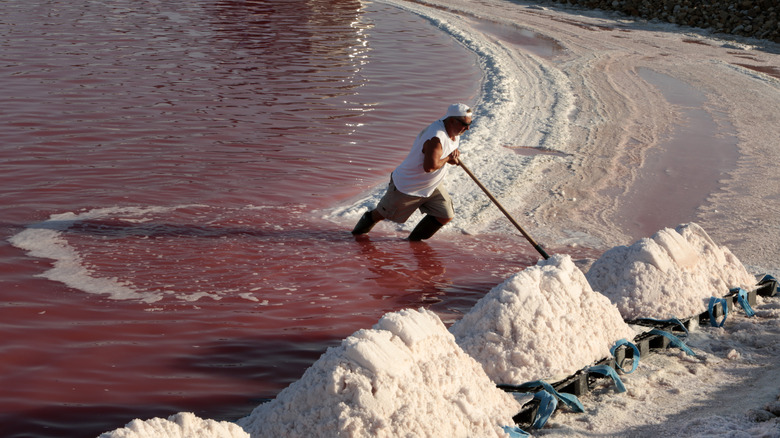The Biggest Differences Between Fleur De Sel And Sea Salt
Sea salt and fleur de sel both come from seawater, and while they each add satisfying notes to dishes, the way in which these salts end up in your kitchen determines their difference in use. Since the year 868, women have harvested salt off the shores of France (via Sacre Bleu Paris). But fleur de sel, French for "flower of salt," is expensive. We're talking at least $30 per pound, according to Cooking Chew. That's one of the reasons why cooks mostly use this salt as a finishing touch — a garnish on top of a dish or an extra, unexpected briny flavor (per The Spruce Eats).
Fleur de sel delivers a complex seasoning because it contains more minerals (calcium and magnesium) than other salts, but its high price point poses a significant barrier, reports Wonder How To. Why can sea salt be found at significantly cheaper prices? The answer lies in the way these two salts are made.
Harvested by the sea
The conditions of both the environment and sea must be perfect for fleur de sel crystals to form, informs Salt Spring Sea Salt. Fleur de sel crystals are collected from marshes by a lousse, a special rake used by workers to scrape the layer of salt that has risen to the sea's surface (per Sous Chef). According to Vinegar Shed, Grand Cru de Batz collects a mere three kilograms of fleur de sel in one day — and only does so for 30 days each year.
Sea salt is produced on a much broader scale and, as a result, can be purchased more cheaply, reports Zoutman. Sea salt forms when the sea has evaporated, and the texture, taste, and color will depend on the region it is harvested in (per 88 Acres). Koyuncu Salt recommends that since fleur de sel melts and loses taste and texture when exposed to heat, you should save it for that final, luxurious sprinkle. Sea salt, on the other hand, can deliver a crunchy, flavorful spice — for less than half the price.

